THOUSANDS DIE IN YEMEN IN FIGHT OVER WATER.YEMEN'S WATER CRISIS,THERE'S TEARING ITSELF OVER WATER.WATER SHORTAGE BECOME BIGGER PROBLEM THAN WAR.
March 28, 2018 at 4:41 pm,
No comments
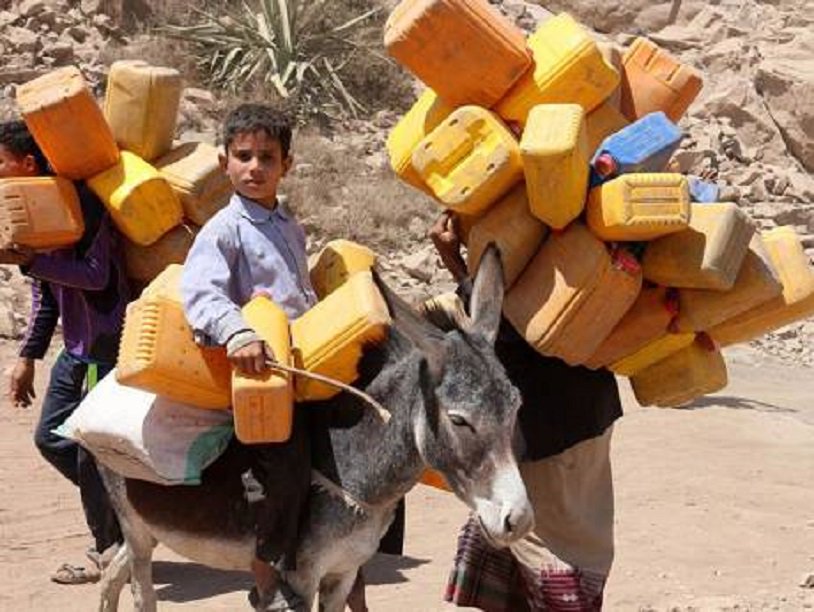 Some boys wait for their turn to fill buckets with water from a public tap amid an acute shortage of water, on the outskirts of Sanaa, Yemen. The war has taken a heavy toll on Yemen. More than 4,000 people have been killed, and the humanitarian crisis has left the impoverished country on the brink of famine.
Some boys wait for their turn to fill buckets with water from a public tap amid an acute shortage of water, on the outskirts of Sanaa, Yemen. The war has taken a heavy toll on Yemen. More than 4,000 people have been killed, and the humanitarian crisis has left the impoverished country on the brink of famine.Sanaa may be the first capital city in the world to run out of water. If that happens, it will be a signpost to the conflicts over shrinking resources that scientists and sociologists see coming in the decades ahead.The crisis in Yemen is described as the world's largest humanitarian disaster. Today, Yemen is on the brink of a famine, and in the coming months, thousands are expected to die due to lack of food and medicine.The conflict is deep-rooted. Since 2004, there has been fighting between the internationally-recognised government and members of the Ansar Allah group, also known as the Houthi movement. The group is affiliated with a local sect of Shia-Islam, and constitutes about one-third of Yemen's population. In September 2014, members of Ansar Allah and troops loyal to deposed President Saleh swept in and took control of the capital, Sana'a.Over 1.4 million people have fled their homes in Yemen and are now struggling to find food and water. Oxfam teams in Yemen are helping by providing tanks of clean drinking water to internally displaced people and through direct cash payments which allow families to buy food and basic supplies.Since the beginning of the current conflict women and children have had to walk long distances just to collect a few litres of water for their families. We are helping by providing internally displaced people with 7.5 litres of water per person per day.Yemen is one of the most water stressed countries in the world. In fact, some hydrology experts warn that it could be the first modern country to run out of usable water, and that this could occur within a decade. Yemen is also in the midst of a major civil war and humanitarian disaster, similar to the conflict in Syria. Yemen is just one of several countries in the Middle East dealing with water shortages, making the issue critical to regional stability. Studies have drawn links between the civil war in Syria and a major drought in the mid-2000s, which drove many farmers from fields to cities and fueled the uprisings that led to the current war. Recent scientific studies show decreasing water levels across the region, including Iraq, Turkey and western Iran.Yemen’s water crisis is the worst in the Middle East. Yemen is located on a dry, semi-arid portion of the Arabian Peninsula. Yemen has no rivers unlike Syria, Egypt, Iraq and other Middle Eastern nations. The country relies completely on ground water and rain water . On average, Yemen gets 500 to 800 mm of rain each year in the high lands, 40 to 100 mm of rain in the coastal areas and 50 mm in the desert areas. The water shortage has gotten worse each year. In 1990, 71% of Yemenis had access to water. In 2004 this figure had decreased to 67%. Generally, urban areas have greater access to water than rural areas. However the decrease of water in urban areas has been more severe . Water availability in urban areas has gone from 84% in 1990 to 71% in 2004. In rural areas water availability went from 68% to 65% . Therefore, if this trend continues rural areas will eventually have greater access to water than the urban areas.As a hot country, Yemen has always experienced water troubles to some extent, but the problem has worsened due to an increasing population and poor water management; instead of collecting and storing rainwater, drilling for limited groundwater has become the norm. No one really knows how much is left. Various estimates predict that the capital Sana’a could run out of water within a decade.Only a tiny proportion of Yemeni families are connected to the municipal supply. State-run water companies only supply some households in the major cities and 70% of Yemenis live in rural areas. Even in the capital Sana’a only 40% of the houses are connected – and they’re lucky if water comes out of their taps more than twice a week. The pipe network is old and an estimated 60% of water is lost through leaks. The situation is worse in the industrial city of Taiz, where water may come out of the tap only once a month. But the municipal supply is heavily subsidised and much cheaper than buying water from trucks, as everyone else does.
The humanitarian situation continues to deteriorate with fuel shortages, rising food prices and a severe lack of basic services, such as health, water supply and education, making daily survival a painful struggle for millions.More than 17 million Yemenis were already going hungry every day. Nearly 7 million of these people are starving – they don’t know where their next meal is coming from. Yemen was the poorest country in the Middle East and poverty and inequality was increasing.Over 4.5 million people are malnourished, including nearly half a million children who are in a life-threatening condition. Nearly 19 million people - 70 per cent of the population - need some sort of humanitarian aid. More than 3 million people have been forced to flee their homes due to the bombing and fighting.Over 46,000 people have been killed or injured since the escalation of the conflict in March 2015. A cholera outbreak has worsened significantly, with 2,000 suspected cases arising each day. There have been over 360,000 confirmed cases and near 2,000 deaths since April 2017. These are expected to number in the millions in the next few decades as global warming melts polar icecaps, floods coastal regions, accelerates the spread of deserts and destroys farmland.Much of Yemen's water problem is self-inflicted. An estimated 40 percent of available water is consumed by the cultivation of qat, a leafy stimulant that is chewed by 70 percent of Yemeni males daily. Farmers prefer to grow it for the high profit involved in the narcotics trade.The government in Sanaa has been unable to do much to ameliorate the crisis. Its authority does not run much beyond Yemen and other major urban centers, and its oil reserves, never particularly big, are running out like the water resources.It is also grappling with a tribal insurgency in the lawless north, an increasingly volatile secessionist movement in the south and the resurgence of al-Qaida forces in the east.The water shortage is starting to cause civil unrest. Water available across the country, much of it rocky highlands, amounts to 100-200 cubic meters per person per year, well below the international water poverty line of 1,000 cubic meters.Yemen has had one of the highest population growth rates in the world in recent years, growing by nearly 25% from 2006 to 2014. This massive growth has put a strain on an already stressed water supply. An extra five million people need food and water, and there has been no equal increase in economic growth. A high youth population is understood as a major contributing factor to political unrest across the Middle East, and Yemen is no exception. Roughly 60% of Yemen’s population is under the age of 24. This statistic, combined with large unemployment and significant water insecurities, set the stage for unrest. The new methodology has practical applications for those involved in water management. For instance, utility operators can use the geodatabase as a third-party certified feedback mechanism to help improve services.The growth in population and increased water usage in Yemen coincided with the development of a cash economy in Yemen, which led to farmers relying more heavily on water-intensive cash crops. Qat, a mild stimulant chewed by many in Yemen, is a cornerstone of the Yemeni economy. A report from 2010 estimated that “Qat production now accounts for 37 percent of all water used in irrigation” and makes up roughly 6% of Yemen’s GDP. However, Qat does not fill the stomachs of hungry Yemenis. With fewer edible crops being grown domestically, access to food drops in step. With more water being used up by agriculture, there is less to drink. Many have predicted a severe crisis in Yemen, with some even predicting the country being completely dry by 2015, and others predicting that the capital Sana’a will be dry by 2020.The war in Yemen has led to the worst cholera outbreak in the world.The cholera epidemic in Yemen has now become "the largest ever recorded in any country in a single year" .There are more than 360,000 suspected cases and 5,000 more being added per day. 1,800 victims have already died, a quarter of them children. Hard as this may be to believe, these numbers will only continue to worsen in the coming months as Yemen struggles with its rainy season spanning July to September.Right now, far from halting the spread of Iran’s influence, the war has deepened the Houthis’ reliance on Iran, which has an easy and cheap means of tormenting the Saudis. And because Saudi Arabia is bogged down in Yemen, Iran has a freer hand to set the terms of a settlement in Syria. The war is a drain on the Saudis at a time of austerity and wrenching economic reforms at home. They should therefore learn another lesson from Israel’s experience of fighting Hizbullah. If wars are to be fought at all, they should be short, and have limited aims. Deterrence is better than debilitating entanglement.
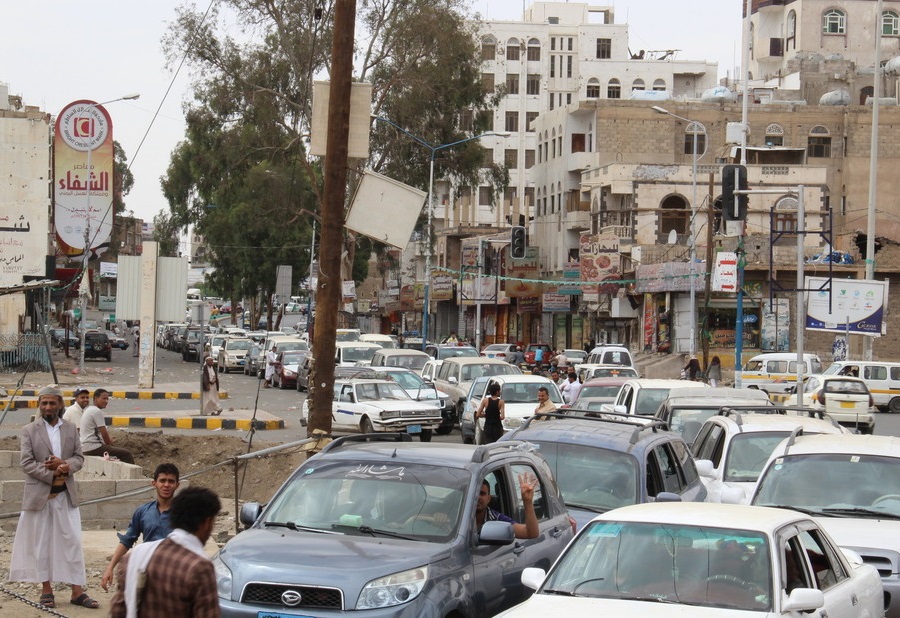 Cars wait for fuel in Al Hasaba district, in Sana'a, the capital of Yemen. The oil crisis has escalated as a result of the conflict and siege imposed on Yemen.The oil crisis has also worsened the food shortages because farmers are unable to pump water to their fields. Oxfam is providing direct cash payments to families which allow them to buy food and basic supplies.
Cars wait for fuel in Al Hasaba district, in Sana'a, the capital of Yemen. The oil crisis has escalated as a result of the conflict and siege imposed on Yemen.The oil crisis has also worsened the food shortages because farmers are unable to pump water to their fields. Oxfam is providing direct cash payments to families which allow them to buy food and basic supplies.
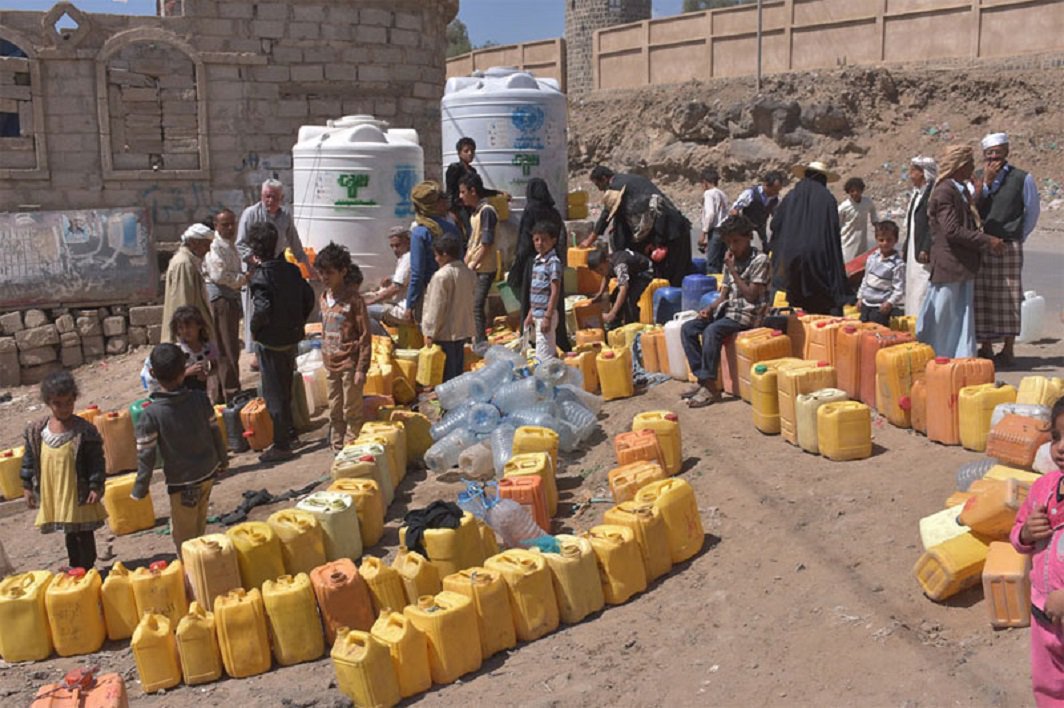
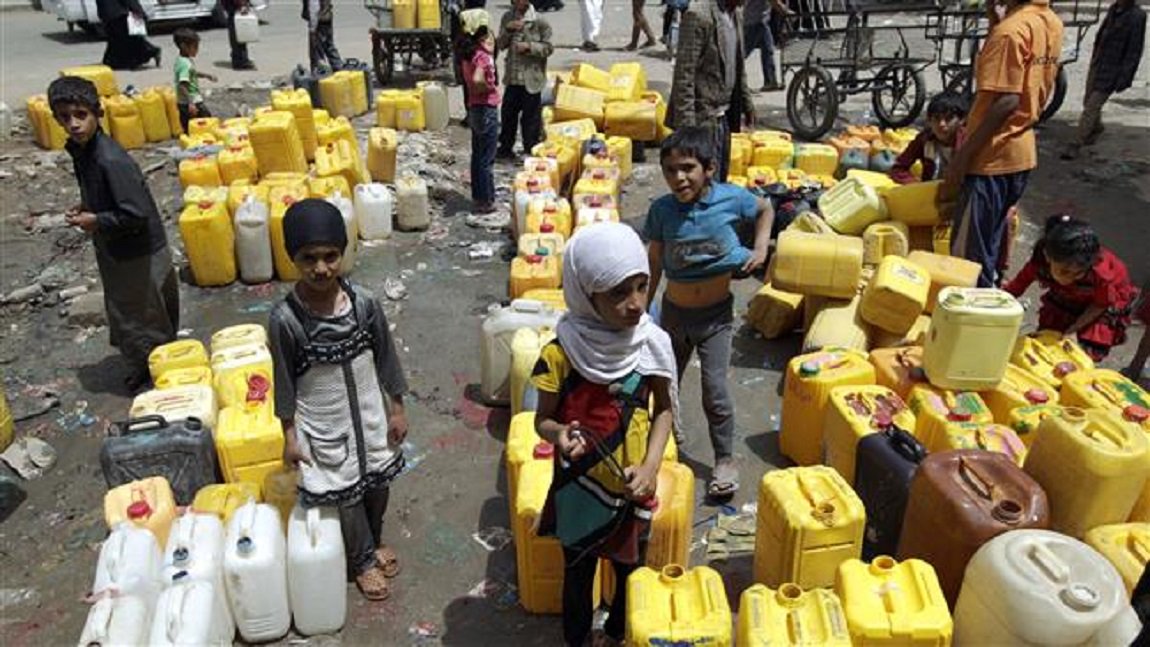
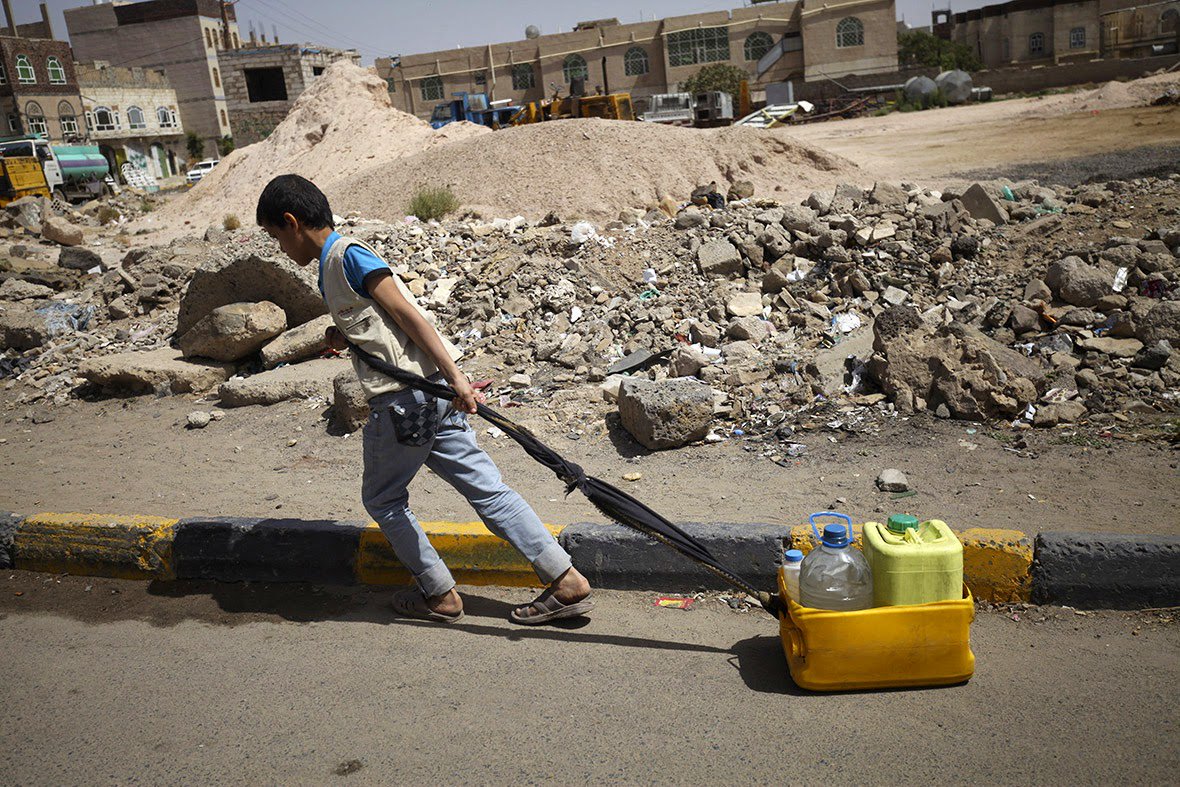 The water shortage is starting to cause civil unrest. Water available across the country, much of it rocky highlands, amounts to 100-200 cubic meters per person per year, well below the international water poverty line of 1,000 cubic meters.
The water shortage is starting to cause civil unrest. Water available across the country, much of it rocky highlands, amounts to 100-200 cubic meters per person per year, well below the international water poverty line of 1,000 cubic meters.